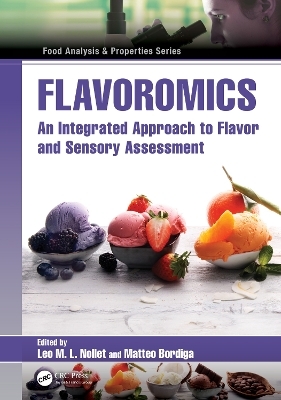
Flavoromics
CRC Press (Verlag)
978-1-032-21062-9 (ISBN)
Forty years of progress in the fields of gas chromatography and data collection have culminated in flavoromics. This is a combination of chemometrics and metabolomics. Essentially, it is the non-targeted way of rapidly collecting a significant amount of data from a wide range of sample populations and using the data to study complicated topics. Now that we have the required tools, we can carry out high-throughput trace investigations that incorporate both gustatory and olfactory signals.
Flavoromics: An Integrated Approach to Flavor and Sensory Assessment describes the tools to do high-throughput, trace analyses that represent both taste and olfaction stimuli. It explains how today's single sample research will generate thousands of data points, which are loaded into sophisticated statistical analysis algorithms to establish what stimuli are responsible for flavor. This cutting-edge equipment will enable us to create flavorings and perfumes that are more realistic and superior.
Key Features:
Includes a detailed section on data handling/mining
Section 4 describes a broad overview of different food matrices
Points out the integration of flavoromics with advanced separation methods, data management, statistical modeling, and variable selection
This book represents a revolutionary tool waiting to help make better, truer to life flavorings and fragrances.
Leo M. L. Nollet earned an MS (1973) and PhD (1978) in biology from the Katholieke Universiteit Leuven, Belgium. He is an editor and associate editor of numerous books. Dr Matteo Bordiga is currently an Assistant Professor of Food Chemistry at Università del Piemonte Orientale (UPO), Novara, Italy. He earned his PhD in Food Science and MS in Chemistry and Pharmaceutical Technologies from the same University. His main research activity concerned food chemistry, investigating the different classes of polyphenols from an analytical, technological and nutritional point of view. More recently, he moved his research interests to wine chemistry, focusing his attention on the entire production process.
Section 1 Flavoromics. 1. Flavoromic Analyses of Aroma and Taste: Markers and Genetic Association Studies. Section 2 Analysis Techniques. 2. Targeted – Untargeted (non-targeted) Analysis. 3. Analysis Techniques (2D-GC, HPLC, GCO, MS, NMR). Section 3 Data. 4. Data Handling. 5. Data Mining. 6. Unsupervised and Supervised Chemometrics in Flavoromics. Section 4 Flavoromics of Foods. 7. Analysis of Plant Oils. 8. Flavoromic Analysis of Dairy Products. 9. Sensory Evaluation and Flavoromic Analysis of Fruit Components. 10. Analysis of Vegetables. 11. Analysis of Fruit Juices. 12. Analysis of Wine and Beer Using Flavoromic Approaches. 13. Analysis of Coffee. 14. Meat. 15. Analysis of Diverse Food Products
| Erscheinungsdatum | 20.12.2023 |
|---|---|
| Reihe/Serie | Food Analysis & Properties |
| Zusatzinfo | 18 Line drawings, color; 35 Line drawings, black and white; 15 Halftones, color; 5 Halftones, black and white; 33 Illustrations, color; 40 Illustrations, black and white |
| Verlagsort | London |
| Sprache | englisch |
| Maße | 178 x 254 mm |
| Gewicht | 453 g |
| Themenwelt | Technik ► Lebensmitteltechnologie |
| ISBN-10 | 1-032-21062-1 / 1032210621 |
| ISBN-13 | 978-1-032-21062-9 / 9781032210629 |
| Zustand | Neuware |
| Haben Sie eine Frage zum Produkt? |
aus dem Bereich


